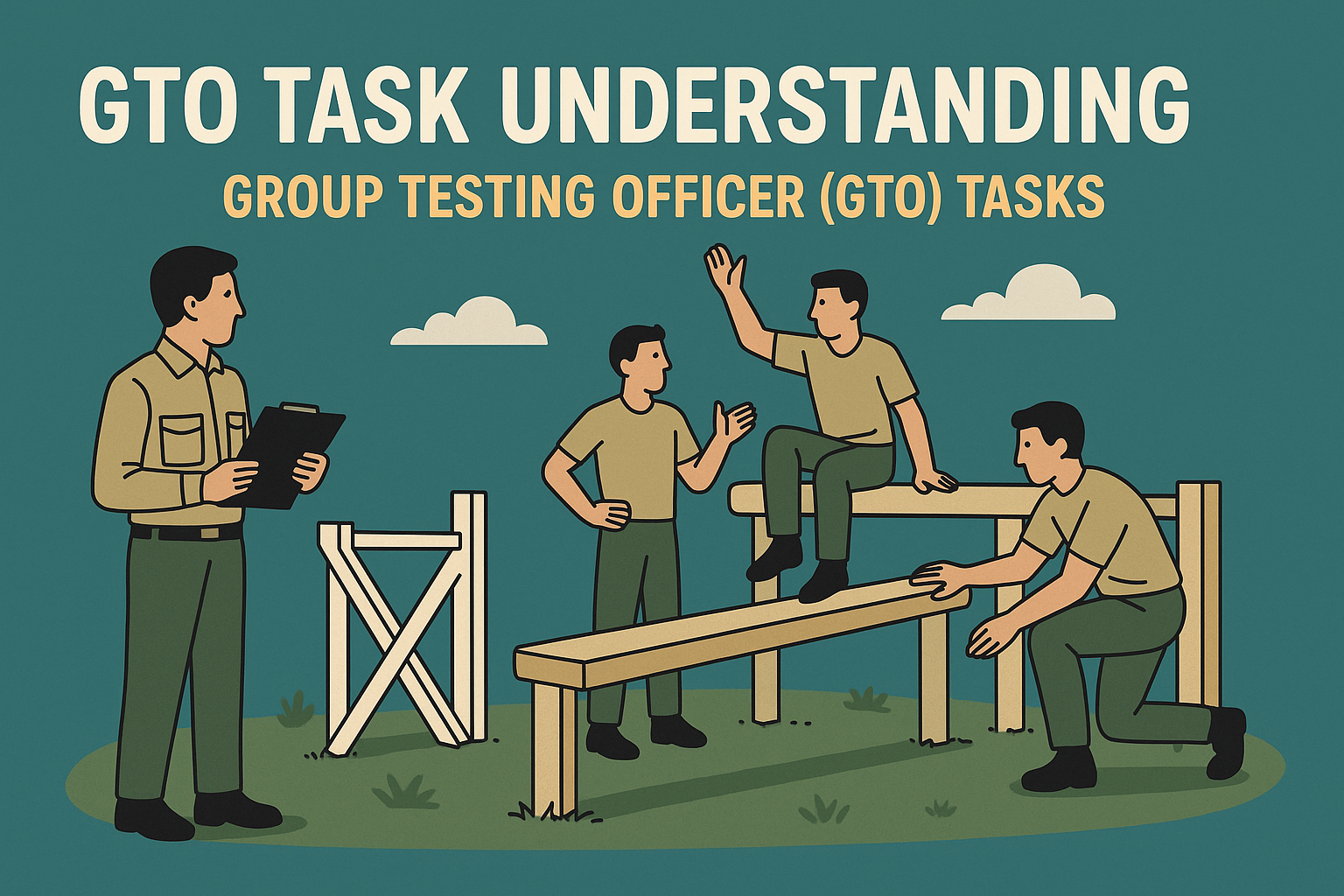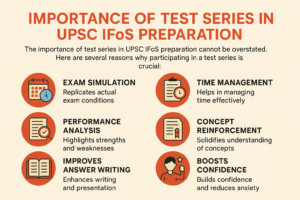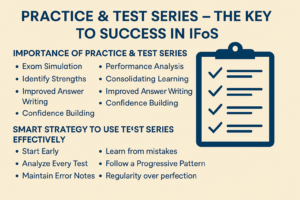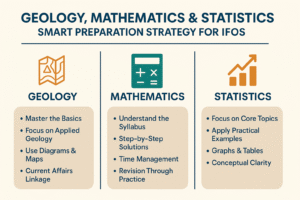Introduction
The Group Testing Officer (GTO) tasks are a critical component of the SSB (Services Selection Board) interview process, designed to assess your teamwork, leadership, problem-solving, communication, and physical stamina. Conducted over two days during the 5-day SSB interview, GTO tasks offer candidates the opportunity to display Officer Like Qualities (OLQs) in action. In this SEO-friendly guide, we’ll cover everything you need to know about understanding GTO tasks, their structure, evaluation criteria, preparation strategies, and frequently asked questions.
What Are GTO Tasks?
GTO tasks are outdoor group activities supervised and evaluated by a Group Testing Officer. These tasks assess a candidate’s performance in a group setting, simulating real-life military scenarios where cooperation and leadership are key.
There are 9 major tasks under the GTO series:
Group Discussion (GD)
Group Planning Exercise (GPE)
Progressive Group Task (PGT)
Group Obstacle Race / Snake Race
Half Group Task (HGT)
Lecturette
Individual Obstacles
Command Task
Final Group Task (FGT)
Detailed Breakdown of GTO Tasks
1. Group Discussion (GD)
Objective: Evaluate reasoning, fluency, and cooperation.
Structure: 2 topics given to the group (first one is choice-based, second one is fixed).
Tips: Listen actively, contribute logically, and avoid dominating.
2. Group Planning Exercise (GPE)
Objective: Assess planning and teamwork.
Structure: A model with a real-life problem scenario is presented. Candidates read, discuss, and write an individual and group solution.
Tips: Prioritize issues, allocate time and resources, be logical and calm.
3. Progressive Group Task (PGT)
Objective: Test cooperation and intelligent action under rules.
Structure: Cross multiple physical obstacles using plank, rope, and a load within a limited time.
Tips: Follow the GTO’s rules (Color Rule, Distance Rule, and Group Rule), suggest ideas actively, and support teammates.
4. Group Obstacle Race (Snake Race)
Objective: Encourage group bonding, coordination, and team spirit.
Structure: Groups carry a rolled-up tent (snake) through a series of six obstacles.
Tips: Focus on motivating your team, help weaker members, and shout war cries for morale.
5. Half Group Task (HGT)
Objective: Evaluate individual contribution in a smaller group.
Structure: Similar to PGT but with fewer members, giving each candidate more visibility.
Tips: Take initiative and suggest practical, rule-abiding solutions.
6. Lecturette
Objective: Judge confidence, structure of thoughts, and public speaking.
Structure: Choose one of 4 given topics and speak for 3 minutes.
Tips: Choose a familiar topic, maintain eye contact, and speak clearly.
7. Individual Obstacles
Objective: Assess physical endurance, risk-taking, and confidence.
Structure: 10 obstacles (jumping, climbing, crawling) to complete in 3 minutes. Each obstacle has a point value (1–10).
Tips: Attempt high-scoring tasks first, pace yourself, and remain calm.
8. Command Task
Objective: Assess leadership, command, and ability to take responsibility.
Structure: Each candidate is given a task and subordinates to command.
Tips: Be clear and polite in giving orders, respect rules, and show initiative.
9. Final Group Task (FGT)
Objective: Final test of group synergy and planning.
Structure: Similar to PGT but considered a summative task with group cooperation as a key metric.
Tips: Be proactive, inclusive, and committed throughout.
Key Qualities GTO Looks For
The Group Testing Officer is primarily looking for:
Leadership ability
Effective communication
Cooperation and team spirit
Mental and physical stamina
Planning and decision-making skills
Responsibility and initiative
Tips to Ace GTO Tasks
Practice group discussions with friends on current affairs and abstract topics.
Work on physical fitness—agility, stamina, and strength matter.
Understand GTO rules and follow them strictly during obstacle-based tasks.
Be observant and analytical during GPE and Command Task.
Stay active in your group, even if you’re not leading.
Help others—officers look for team players, not lone wolves.
Never argue or interrupt—respectful communication is key.
Common Mistakes to Avoid
Dominating or being overly aggressive in group tasks
Breaking GTO rules during physical tasks
Staying silent or passive
Showing lack of confidence or initiative
Criticizing other candidates or acting superior
Giving up on obstacles midway
Final Thoughts
Understanding and preparing for GTO tasks is crucial for success in the SSB interview. These tasks are not just physical tests but comprehensive assessments of your potential as a future leader in the Armed Forces. Show your natural self, think logically, and stay calm under pressure. GTO tasks are your stage to demonstrate that you embody the Officer Like Qualities needed to serve the nation.
Frequently Asked Questions (FAQs)
Q1. Can I fail the SSB just because of poor GTO performance?
No. GTO tasks are one part of a three-pronged evaluation—GTO, Interviewing Officer, and Psychologist. Poor GTO performance can be balanced by strong scores in other areas.
Q2. Are the GTO tasks physically very challenging?
They are moderate in difficulty. Good physical fitness and endurance are enough to handle them confidently.
Q3. What if I can’t complete all the Individual Obstacles?
It’s okay. Focus on attempting high-scoring ones and keep a positive attitude. Effort matters more than perfection.
Q4. Can I ask for help in command tasks?
No. You are expected to lead and command others, not seek their help.
Q5. How do I prepare for GTO tasks at home?
Practice public speaking, build physical stamina, engage in team games, solve puzzles, and study previous GTO tasks to understand their structure.










